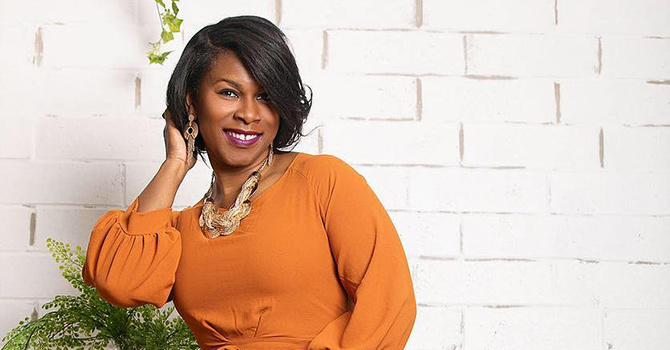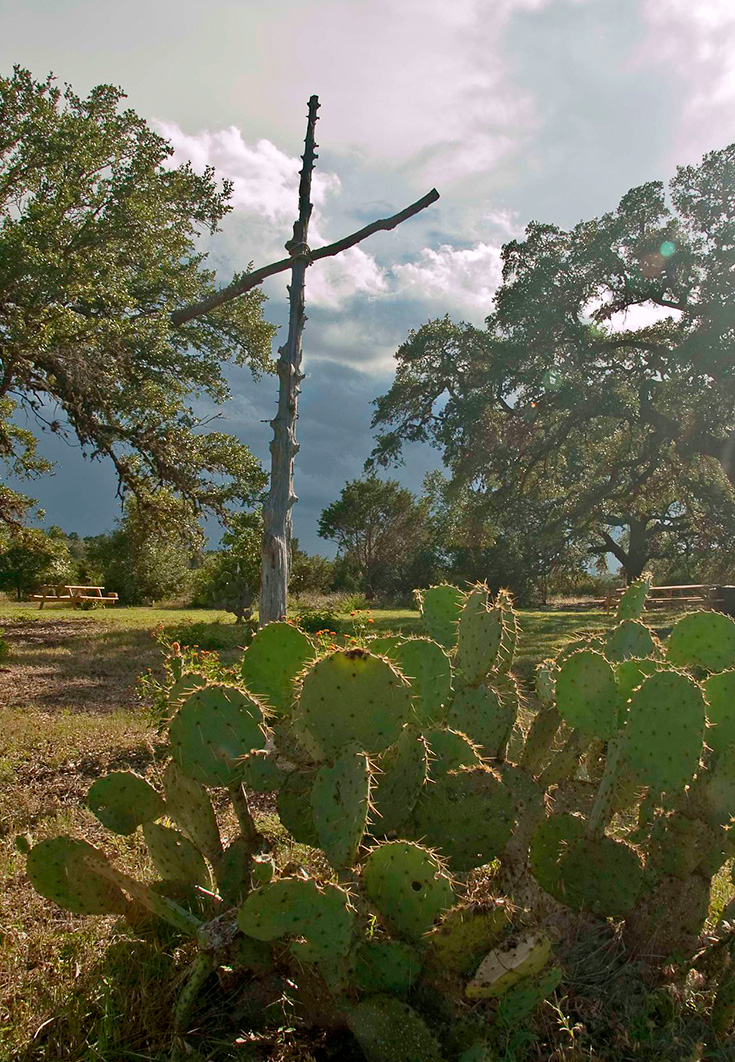There is a stereotype which describes a male choir director as flamboyant and effeminate.
“There are ways in which people observe men’s musical participation and ascertain something about their gender expression and sexual orientation largely based upon stereotypes and presumptions and less likely to be based upon how the men themselves identify,” Alisha Lola Jones says.
Jones pushes back on this stereotype, identifying where it comes from and the harm it produces for not only black men but also black women and black nonbinary people in various case studies and contexts.
Jones’ research investigates the relationship between music and gender expression in the black church, especially in the archetype of the effeminate, flamboyant choir director. She argues that racial colonial abuse sexualized black men’s bodies, creating lasting and harmful stereotypes.
Her forthcoming book on the topic, “Flaming? The Peculiar Theopolitics of Fire and Desire in Black Male Gospel Performance” (Oxford University Press), will be released in May.
Jones is an assistant professor of ethnomusicology and also teaches in religious studies and African American studies at Indiana University. A pastor, preacher and an accomplished vocalist, she consults as a scholar-performer for sacred and secular spaces seeking to learn about and honor black sacred music.
Jones spoke with Faith & Leadership’s Chris Karnadi about her work and how to understand and change the impact of racism on black worship. The following is an edited transcript.
Faith & Leadership: Where does the trope of the flamboyant choir director come from?
Alisha Lola Jones: In my estimation, it is lodged in a popular imagination situated in anxieties about protecting black masculinity and also resisting the hypersexualization of black people in the United States. These anxieties have trickled into the worship experience, where people are highly invested in making sure that there is a prevention of black male absenteeism and that the masculinities that are present are protected and developed to make sure that we have men in households and men in churches.
However, black communities are not the only faith communities that are anxious about absenteeism or a decline even in faith participation. Faith communities around the world are facing this. It’s just seemingly intensified when we’re talking about black communities.
So the origin of it lies in the popular imagination. And the curious thing about it is that this imagination is definitely connected to a postcolonial moment where various beliefs about the hypersexuality of black people were distributed in order to demonize them and in order to distance them from Christ and to make them perpetually in need of redemption.
One of the ways in which we know this to be true is portrayals of the demonic. I talk [in my research] at length about how there were visual representations of the devil, of the demonic, that were portrayed as dark bodies, portrayed as having a large phallus, and those visual representations of evil and demonic were mapped onto black male bodies, creating these sorts of tensions among men in the United States, European American men, African American men. The negotiation of those perceptions trickled into the black worship experience.
There’s also one other strand, which is the sexual violence that occurred during the enslavement of Africans in the United States that still goes unaddressed. That sexual trauma, that shared memory, has also been interwoven in the perceptions of the feminizing of men that occurred through sexual acts during colonialism. And so that is also a contributing idea to why we must use the worship experience to not only surveil black bodies -- particularly male bodies -- to protect black masculinity but then also this really unique idea of deliverance, sexual deliverance, that we see distributed in Pentecostal worship in particular.
F&L: So how is the church a place that both resists and is not immune to those societal forces that you’re talking about?
ALJ: Some of the tensions in African American worship, and Pentecostal worship in particular, are negotiated through this assessment of feminization that we see.
There are actual workshops where churches are engaging this landscape. They’re trying to understand feminine masculinities. Some people have concluded that the presence of a feminine masculinity or feminine gender expression is due to the overrepresentation of black women in the pews. They think that female single-parent households are to blame for feminine masculinity that people see.
So what I follow is how this whole notion of targeting and undoing the feminization of the church is also a target on what femininity is and how femininity is perceived. What does it mean for women to then carry these messages on feminine masculinity, or that effeminate masculinity is somehow not in God’s will?
I hear that as the internalization of misogyny, or the particular term “misogynoir,” a disdain for black women and black femininity. It shows up in this value system that goes against feminization in churches, and so I observed that this also has implications for women.
How is this agenda also saying something about what we view to be powerful or disempowered in women’s presence in the church? Do we really want to figuratively throw the baby out with the bathwater in our effort to pursue holistic images of ourselves, of our bodies in the church?
I say that it is unnecessary to target women who are financing the churches and who are financing the “gospel” music industry. They are the largest clientele. They are the people that are the engine, through service and finances, and there really must be a better way. And so I show how there are remarkably talented men who say without reservation that it was women that taught them, it was women that guided them and protected them in complex ways. And yes, we can revisit the manner in which they protect them, but we don’t have to do away with them holistically or throughout the tradition.
That’s one big tension -- this idea of feminization and really asking women to think about their participation in these values, and distributing these values.
F&L: Shifting from your expertise as an ethnomusicologist to your experience as a pastor and preacher, what should Christian leaders do with this?
ALJ: I think what drives us from a theological and pastoral position is at the end of the day, if we are meant to serve and we are to be known by our love, my hope is that the case studies will give people tools to better understand unique people, gifted people in their midst.
I’ve shared this research in progress with the very communities that I’m researching, that people really don’t want to do harm to people who are seeking healing ministries. And I believe that walking through these case studies, people will be a lot more -- or at least seek to be a lot more -- precise in the way that they engage people who are different from them, even intraculturally or intradenominationally.
I have heard from discreetly gay and lesbian faith leaders and believers that they really appreciate having these conversations with someone who identifies as a cisgender, heterosexual woman raised in the Word of Faith tradition. And I’ve also heard people from my tradition and similar traditions say, “Wow, I hadn’t even thought of these details before” or, “I hadn’t had the opportunity to think through these details with a person who identifies as an insider themselves.” So it’s been my great honor and privilege to start these new conversations with people who, I think, just need someone they can trust to walk through the logics that are at play.
F&L: Outside of the black tradition, how should people be thinking about the formation that happens through worship leaders and music?
ALJ: So what I love and what I’ve heard from musicologists and ethnomusicologists -- and it is interdisciplinary work that I’ve remained in conversation with, people outside the field of music research -- and what I have observed in terms of understanding repertoire, understanding liturgy, is that it’s a useful research for thinking about social justice within the construction of liturgy.
[I’ve seen] some of the assumptions and presumptions and biases that have gone unchecked, and how we can be even more discerning in who we incorporate, to stretch people in their understanding of the beauty of God’s creation. For example, we have this conventional soprano, alto, tenor, bass in our choral offerings in the church. But there’s also a countertenor. It’s rare vocal designations that we see on the concert stages, and we bring them into black worship. It’s actually a common incorporation in certain pockets of black religiosity.
In Baltimore, there’s a huge tradition of countertenors; in D.C., there is as well. As with any culture, there are regionalisms, and so through this I’m able to amplify these regionalisms that are already at work, already thriving, so that as folks continue to engage new talents, they have the tools to know how to engage them, or at least ask better questions.
With the case study of a particular countertenor, what he faced was that people would try to have him sing tenor, because that was what they were accustomed to. It’s like me as a soprano being asked to sing alto.
I can do it. Will my instrument sound its best? No. Will I feel comfortable? Not quite. Will it contribute to my longevity as a musician? No. So drawing those parallels has been useful for him so that as he gets higher, people love his instrument. They also need to know, almost in a pastoral sense, how to receive him.
However, [individuals] share through the case studies that people often exploit them in terms of compensation. So through this, I talk about fair compensation, not just for the men; I draw parallels to how women are often exploited as vocalists in these settings, not being paid at all. It’s a constant comparative work to help people be more ethical, be more hospitable even in the midst of learning, even in the midst of our own ignorance, being in the posture of a learner even as we disagree. Wanting to love more than wanting to disagree is what I’m advocating.











